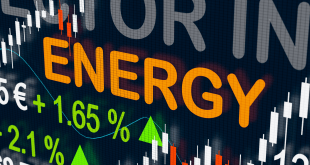The recent performance of nuclear energy companies presents a compelling paradox: strong share price appreciation and significant strategic deals coexist with mixed short-term financial results. This divergence highlights a crucial question for the market: is the sector’s valuation being driven primarily by immediate corporate execution and demand, or by the broader, long-term political and technological narrative of a “nuclear resurgence”? The answer suggests investors must carefully weigh the powerful tailwinds of policy against the sometimes-erratic realities of quarterly performance.
Mixed Earnings, Unmoved Optimism
Corporate earnings reports from key players in the nuclear and energy sectors, such as Constellation Energy (CEG) and Vistra (VST), delivered a notably mixed bag. Constellation Energy, a major nuclear component of the S&P 500, reported third-quarter earnings per share that missed some forecasts, yet its stock ultimately reversed early declines to advance. Similarly, Vistra, another significant player, reported revenue that disappointed expectations. This pattern—where disappointing short-term financial metrics are quickly overlooked—suggests the market is applying a generous discount rate to the sector’s near-term risks, prioritizing its future promise.
The reason for this market resilience lies in key strategic moves and the shifting energy landscape. Constellation Energy’s successful execution, supported by strong nuclear output and the expected close of a major acquisition, signals confidence in long-term capacity and reliability. This operational strength, coupled with other nuclear-focused firms like Talen Energy surpassing analyst expectations, demonstrates that corporate activity is robust, even as raw headline numbers sometimes fall short.
The Unwavering Demand Signal: Big Tech and Government Policy
The most powerful catalyst for the nuclear sector is the dramatic and visible shift in demand from massive data center operators. Constellation Energy recently secured a significant 20-year energy deal with Meta Platforms to power its massive, AI-driven infrastructure. This follows a similar long-term contract with Microsoft for its data centers. These deals are not merely incremental; they represent a fundamental new source of demand for always-on, low-carbon power that is difficult for intermittent renewable sources to meet.
This corporate appetite for reliable, clean power is amplified by government focus. The push for clean energy and grid reliability, often framed by the actions of policymakers and central banks concerned with long-term energy security, has provided an underpinning for the sector. While specific officials were not quoted, the political momentum behind nuclear energy—including support for existing facilities and the development of next-generation technologies—acts as a powerful, non-financial support structure for valuations.
The Next Frontier: Small Modular Reactors (SMRs)
The analytical focus must also turn to the emerging technology of Small Modular Reactors (SMRs), which represents a significant part of the sector’s forward-looking promise. Startups like Oklo are at the forefront of this movement, aiming to drastically reduce the cost and timeline associated with building traditional nuclear facilities. The market is clearly anticipating this future, as evidenced by the significant year-to-date share price gains of SMR-focused plays like NuScale Power and Nano Nuclear Energy, despite the technology not yet being in commercial operation.
However, the volatility in these SMR stocks, including sharp pullbacks after initial highs, underscores the inherent risk of investing in a technology still in the developmental phase. Furthermore, fluctuations in the uranium market, as seen with companies like Cameco and Centrus Energy, show that the entire supply chain remains subject to commodity and project risk.
Investors and traders must approach this sector with a discerning eye. The compelling case for nuclear energy—fueled by the AI boom and global climate policy—is indisputable. However, the enthusiasm for the long-term story must be balanced by a reasonable level of caution regarding short-term execution, policy shifts, and the high-risk profile of pre-commercial technologies. Remaining fully informed about specific project milestones, regulatory movements, and the true cost of scaling these energy solutions will be paramount in navigating this powerfully trending but inherently complex market.
 Noor Trends News, Technical Analysis, Educational Tools and Recommendations
Noor Trends News, Technical Analysis, Educational Tools and Recommendations





